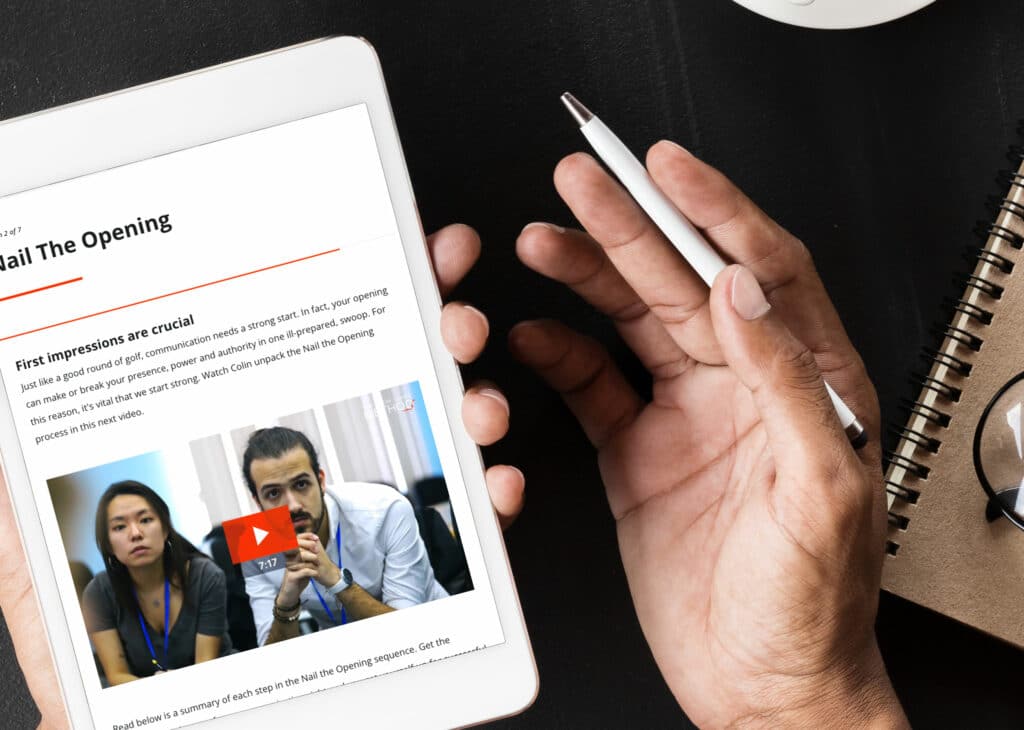A while ago we received some feedback from a participant who was facing some significant hurdles as a remote worker and a remote learner. He has ADHD. After an insightful chat with Brian* (not his real name), we learnt more about his experience in virtual meetings and the many ways this format can be difficult for him to engage in. For instance, he is very easily distracted when he can see other participants and their environments on the screen.
This conversation motivated us to dig deeper into how we provide supportive training methods for neuro-diverse people so our training can be accessible and impactful for everyone.
What are the challenges for neurodiverse professionals in the workplace?
Learning is hard. Some people appear to find learning easier than others, but let’s be careful and thoughtful when making assumptions. Everyone has the potential to be equally quirky in their neurology and in reality many people go through life masking or adapting their learning behaviours, to meet ‘typical’ expectations found within the workplace. In fact, many people go through life masking or adapting their learning behaviours, to meet ‘typical’ expectations found within the workplace.
As if learning wasn’t hard enough, we now live in a world where many of our interactions happen virtually – including virtual team training and development opportunities. For someone like Brian, who learn differently, virtual or online learning can compromise their experience and ability to stay engaged in a multitude of ways:
- Screen fatigue: The screen delivers more visual input than if you were sitting with people in a meeting room. This leads to greater than normal screen fatigue and a desire to switch off after shorter bursts of time than the recommended 90 mins.
- Sensory overload: It’s harder to filter out a whole lot of background noise that you wouldn’t get in an office.
- Non-verbal cues: You have to work harder if you are going to pick up non-verbal cues such as tone, pitch and facial expressions as well as visual-spatial cues. Because turn-taking is more difficult, people are more likely to interrupt and talk over the top of each other, adding to the auditory processing load.
- Multitasking: Participants are constantly performing tasks such as muting and unmuting, adjusting volume, moving between views, using the chat function and possibly attending to other things popping up on your screen or emails coming through. It can be quite anxiety-inducing if you are under pressure.
- Technology: Unreliable technology causes poor network connections, screen freezes, echoes and sound delays, all of which demand more of our attention to make sense of what is happening.
How can you be more inclusive for neurodiverse employees?
Think about your delivery in online environments. Are you using inclusive techniques to empower all your learners? Some simple ways to enhance your inclusivity in the online classroom include:
- Keep to time and offer shorter breaks more often.
- Regularly frame and reframe content to summarise information and help people stay engaged.
- Use multimodal tools to keep things interesting – videos, polls, chat and the like.
- Prioritise the use of verbal and gestural cues in your speech.
- Encourage a distraction-free environment to aid with presence and mindfulness.
- Speak in plain English and respond in the moment to questions and feedback.
- Limit small talk to preserve participant’s energy.
- Summarising content in the chat to augment learning for those who may have ‘switched off’.
- Offer a ‘no screen’ option and allow participants to listen to some content in the style of a podcast.
- Include some of the above red flags within your workshop guidelines. I.e. Be present – phones off, email away. Take a break when it is break time. Audit your workspace so it is clear of mess and noise and you are able to focus on the content without additional and unwanted distraction.
If you know of any other successful techniques for inclusion in the online classroom, we would love to hear them. Differentiated learning is a passion of mine and I’m constantly trying to improve my delivery skills to be more inclusive. Find out more about how we deliver engaging and impactful live virtual training here.
The Colin James Method® Facilitators train corporate executives to improve their professional communication skills with a proven methodology. Our highly trained Facilitators and Coaches are recognised for their experience in their fields and have worked with many individuals and organisations around the world to master the art of communication.












